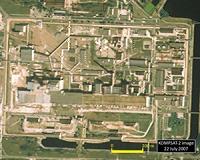 |
Washington DC (SPX) Apr 26, 2011 Plans for a nuclear waste repository in southern New Mexico were initially opposed in the late 1980s by a 2-1 margin but a new analysis of 35 statewide public opinion surveys taken over a decade shows that public acceptance steadily grew as Federal agencies went through the policy development and approval process over a 25-year-span. "By the time the facility opened in March of 1999, a majority of New Mexicans supported its continued operation," according to the research. Lead author Hank Jenkins-Smith says the Japanese earthquake, tsunami, and related nuclear leaks at power facilities where spent nuclear fuel is stored have rekindled policy debates about siting centralized repositories for spent nuclear fuel. "The events in Japan have raised awareness of the problem of storing nuclear fuel onsite at reactors. Careful policy design of government review, approval, and public involvement processes as we have seen in the New Mexico case provides some cause for optimism for siting centralized repositories." The authors found that the extended regulatory process for the Waste Isolation Pilot Project (WIPP) in New Mexico-which only accepts military waste-involved multiple agencies, community input, and independent scientific reviews that served to build support for the facility. "Attention to the lengthy and often contentious regulatory process involved in licensing the facility served to increase public confidence and acceptance," according to the research, which was funded in part by the University of New Mexico. The analysis, entitled "Reversing Nuclear Opposition: Evolving Public Acceptance of a Permanent Nuclear Waste Disposal Facility," appears in the April issue of the journal "Risk Analysis" published by the Society for Risk Analysis. In addition to Hank C. Jenkins-Smith, the authors include Carol Silva, Matthew Nowlin, and Grant deLozier, all with the Center for Applied Social Research at the University of Oklahoma in Norman, Oklahoma. Regulatory review processes may have implications for other national efforts to identify locations suitable for building nuclear storage facilities. "Analysis of the quarter-century long process that led to the licensing and operation of the WIPP nuclear waste repository has important practical implications for future efforts for nuclear repository siting. Initially subject to opposition by a large majority of the public, and dogged by persistent charges of secrecy and reckless imposition of dire risks on the public, support for WIPP nevertheless grew gradually but substantially over time," according to the article. The researchers were surprised to discover that some of the strongest support was found among those living near the route where the nuclear waste is shipped. Jenkins-Smith says government officials reached out to firemen, police officers, and other emergency responders along the transport route and provided key training and technical assistance that built community confidence and support. "Proximity to the nuclear waste transport route - widely expected to be the Achilles Heel of nuclear waste disposal - came to be a positive factor in assuaging concerns and garnering support." Public acceptance actually surged when the shipments began in March of 1999, the study found. Political ideology was a strong factor in shaping risk perceptions about nuclear transportation and shipping routes. To measure political ideology, the researchers used a seven-point scale on which respondents self-identified as strong liberals to strong conservatives. Conservatives favored the site and liberals, particularly in the Albuquerque and Santa Fe area, opposed it. This factor was three times more important than the next variable in determining the perceived risk of waste transportation to WIPP, according to one of the analyses performed in the study. Jenkins-Smith says one key to New Mexico's successful experience was ensuring that host communities have a stake in the process that goes beyond a financial reward or jobs. "For the Carlsbad, New Mexico community that hosts WIPP, the waste came from the Los Alamos Laboratories which are also in New Mexico. The community felt it was their duty to accept some of the nation's military waste for patriotic reasons and because the state benefits from the presence of Los Alamos within its borders," according to Jenkins-Smith.
Share This Article With Planet Earth
Related Links Society for Risk Analysis (SRA) Nuclear Power News - Nuclear Science, Nuclear Technology Powering The World in the 21st Century at Energy-Daily.com
 World marks Chernobyl under shadow of Japan
World marks Chernobyl under shadow of JapanKiev (AFP) April 26, 2011 The world on Tuesday marks a quarter century since the world's worst nuclear disaster at Chernobyl in Ukraine, haunted by fears over the safety of atomic energy after the Japan earthquake. Russian President Dmitry Medvedev is to make a landmark visit to Chernobyl later on Tuesday to take part in the memorial ceremonies at the site, joined by his Ukrainian counterpart Viktor Yanukovych. I ... read more |
|
| The content herein, unless otherwise known to be public domain, are Copyright 1995-2010 - SpaceDaily. AFP and UPI Wire Stories are copyright Agence France-Presse and United Press International. ESA Portal Reports are copyright European Space Agency. All NASA sourced material is public domain. Additional copyrights may apply in whole or part to other bona fide parties. Advertising does not imply endorsement,agreement or approval of any opinions, statements or information provided by SpaceDaily on any Web page published or hosted by SpaceDaily. Privacy Statement |